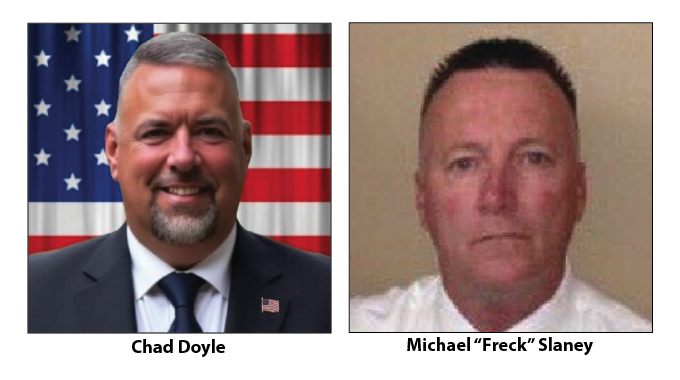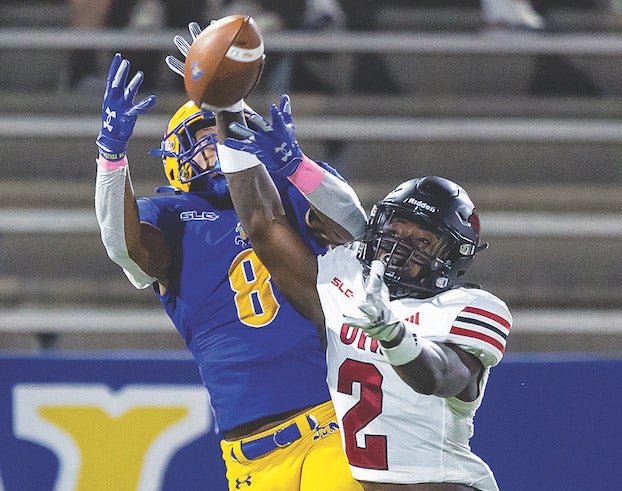Travel: Hot baths at Hot Springs
Published 12:30 pm Monday, June 3, 2024

- The lines of people waiting to get into the Buckstaff Bathhouse never seem to slack off. Getting in to experience a private bath (bathing suits optional) is first come, first served. The lines start well before the bathhouse opens at 8 am; many people are turned away every day. (Mary Richardson / Special to the American Press)
By Mary Richardson
I was in a deep, turn-of-the-century porcelain tub which was filled to the brim with 104-degree, mineral-rich thermal water coming out of brass pipes that also looked 100 years old. The water swirled and gurgled over, around, and under me. I soaked for 20 minutes, and then an attendant led me to a table and covered me with steaming, pure white towels. She gave a little flip to the towels at my fingertips and feet, so I looked as if I had grown four little flippers. Then she placed a cool towel over my forehead and I may have fallen asleep.
This was my introduction to the thermal baths at Hot Springs, Arkansas, and it was heavenly. My husband, Joe, and I were going to spend two days in Hot Springs, and I wanted to try out all the thermal baths. I did, but it wasn’t easy. I had thought that the main question would be “bathing suit on, or bathing suit off?” It turned out that the real question was how long were we willing to wait.
Trending
Our first thermal bath was in our hotel. We had chosen the Arlington Hotel because it was historic – and because it was the only hotel with a functioning bathhouse. We were in the third Arlington. The original one opened in 1875. It was destroyed to make way for a more luxurious one, but that one burned down. This Arlington was built in 1924. We were in one of the original 560 rooms, remodeled with air conditioning, heat, and modern plumbing. And it was fairly cheap. The “senior rate” was only $129 per night, and the baths were $40.
Because of time constraints, we had booked our baths for 8 a.m. on the first morning we were in Hot Springs. We hadn’t realized how lucky that had been until we left the hotel to find the other baths.
Our first stop was the visitor’s center/museum at the old Fordyce Bathhouse, built in 1915. There we learned that only two of the bathhouses were operational – Buckstaff and Quapaw. Our travel agent, Anne Rose, had already told us not to miss the Buckstaff, which had opened in 1912 and is the only facility on Bathhouse Row that has never fully closed. At about 11 a.m. we joined the line. After a long wait, the stressed-out clerk just managed a smile, saying, “Only a one-hour wait for you, Sir, but it will be at least four hours for you, Ma’am.” We decided we wouldn’t wait.
We ambled over to the Quapaw Baths and Spa. Unlike the Buckstaff where all baths are private, the Quapaw has four Roman-style open pools, which range in temperature from 95 to 104 degrees. It was first come, first served, and they were full. No one would be admitted the rest of the day. No baths for us.
Our thoughts turned to beer. Another historic bathhouse had been turned into the Superior Bathhouse Brewery, with beers made with Hot Springs’ thermal water. A sign read, “Closed for a plumbing problem. Come back tomorrow.”
Ice cream. I had read about a small batch creamery, Scoops Homemade Ice Cream, and it was located in the basement arcade of our hotel. However, the total eclipse a few days earlier brought a horde of tourists. A sign told us, “Closed. We thought we had prepared enough ice cream, but the eclipse viewers ate it all. Come back tomorrow.”
Trending
Thwarted by baths, beer, and ice cream, we decided to explore the town.
The hot springs at Hot Springs have been used for 10,000 years, according to historians. Native Americans called the area “the valley of the vapors.” In 1818, the Quapaw Native Americans ceded the hot springs to the United States. Trouble ensued, and, in 1832, the U.S. Congress protected the area by designating it as the “Hot Springs Reservation,” thus inadvertently annoying future amateur historians.
Technically, these civic minded historians claim, Hot Spring is the oldest national park in the union. “But people don’t see it that way because of that word ‘reservation,’”
someone complained later in our hotel’s bar.
“WE were the first,” he said. “Yellowstone wasn’t even created for another 40 years!” In 1921, Congress changed the name to “Hot Springs National Park,” but the damage was done.
Very hot and very old water is the reason Hot Springs exists. Unlike the sulfuric springs at that upstart national park, Yellowstone, the water smells wonderful. The National Park Service explains: “Rainwater travels down 6,000 to 8,000 feet towards the core of the earth, slowly heating up as it travels deeper and deeper. The water travels for 4,000 years before hitting a fault line. Then, relatively quickly (i.e. about 400 years), it reaches the surface in what is now the historic downtown area of Hot Springs National Park.” I could almost hear the historian saying, “OUR water is 4000 years old, Yellowstone. How old is yours, huh?”
Today, much of Hot Springs is preserved by government entities. The National Park Service oversees eight historic bathhouse buildings and gardens along Central Avenue, called “Bathhouse Row.” Downtown Hot Springs is listed on the National Register of Historic Places. Other art deco-styled buildings have historic recognitions, including our hotel, The Arlington (which I later learned had been a favored retreat for Al Capone).
Today Hot Springs has a calm, clean and sedate vibe. But there are clues of a wild past. First, there is the museum dedicated to criminals – the Gangster Museum of America. Then there is a cheerful statue of a dapper Al Capone, handcuffed to a park bench, smiling at the passersby.
Hot Springs was a national gambling mecca between 1927-1947. It had more casinos and gambling houses than any other place in America, according to the National Park Service. Hotels advertised the availability of prostitutes. Betting on the horses was easy. Visitors from all over the world came to combine gambling, bootlegging, and other forms of entertainment with soaking in mineral waters.
The law didn’t help. Local law enforcement was controlled by a political machine run by long-serving mayor Leo McLaughlin. A former sheriff who wanted to clean up the town was murdered. This came to an end after World War II. A “Government Improvement” slate of veterans was elected, and they broke the machine– but only until 1954. That year Orval Faubal was elected as governor. Wikipedia states that Faubal was easily elected because of his defiance of federal court desegregation orders. He turned a blind eye to gambling and Hot Springs flourished again.
Finally, in 1967, gambling was closed down by Governor Winthrop Rockefeller and Circuit Judge Henry M. Britt. Rockefeller sent in a company of state troopers to shutter the casinos and burn the gaming equipment. Today Arkansas still restricts gambling, limiting it primarily to horse and dog racing.
The next morning, we set out for Buckstaff. Again, the wait was going to be several hours. We went over to Quapaw. The wait “wouldn’t be too long” we were told. “About how long would ‘not too long’ be?” I asked timidly. “No way to tell, really,” she said with a shrug. “Once in, people can stay as long as they want, and sometimes they stay all day.”
This time we were lucky. Our names were called in less than an hour. We grabbed our bathing suits – these were communal pools – and went in. We saw four lovely pools of varying sizes, each one with a cute little waterfall, all under an art deco glass-domed ceiling. I had seen pictures of beautiful young women and men in these pools, so I was a little worried. However, the pools were filled with senior citizens in varying stages of decay, all happy just to paddle around. We fit right in.
Next, we checked the ice cream place. Open! We checked the brewery. Open! It was a good day.
That evening turned out to be our best thermal bath experience. The Arlington has an outdoor thermal pool tucked into the mountainside behind the building. After sunset, we followed arrows down long hallways, crossed a bridge over a little ravine, and found we had the pool all to ourselves. The crescent moon and stars shown down on the steam rising from the pool. It was pretty magical.
We were leaving in the morning, but I decided to try Buckstaff one last time. I walked down in the early morning light to arrive 30 minutes before opening. There was a line! I stuck it out, and finally signed up for a bath plus a 20-minute massage. The clerk warned me it would take about two hours. I paid my $89 and texted Joe that he might as well drink another pot of coffee.
I was soon wrapped in a huge white sheet, which kept slipping. Then I waited. They were understaffed. Only three “bath attendants” and three masseuses were working, and there were dozens of women. I joined the other white shrouded women. We waited.
Finally, four full hours later, I walked out of the bathhouse. As we drove home, I reflected on 19th century bathhouses creating a town by harnessing 4,000-year-old, 104-degree water. It had been worth the wait to experience it. And I felt very clean.





